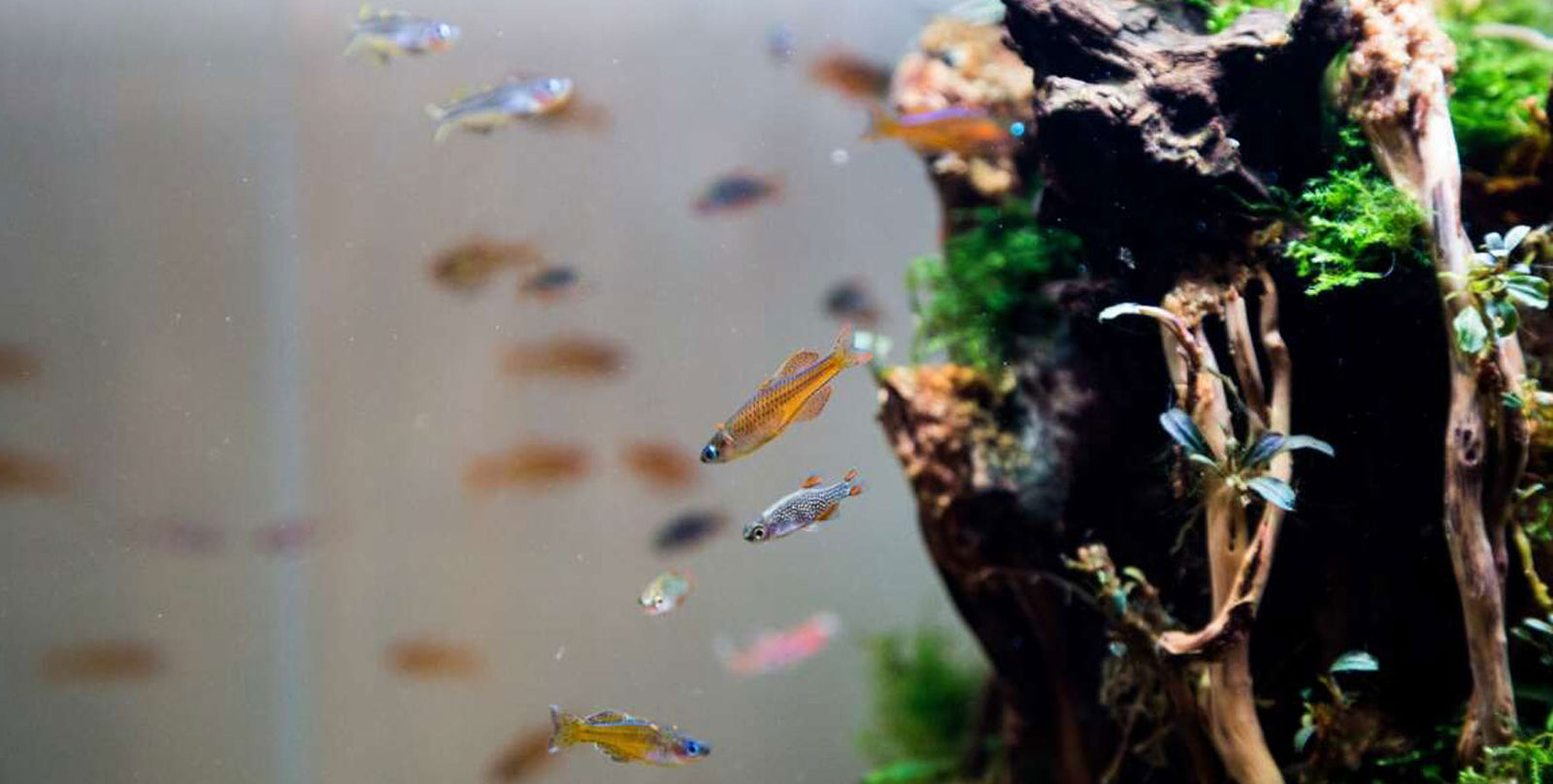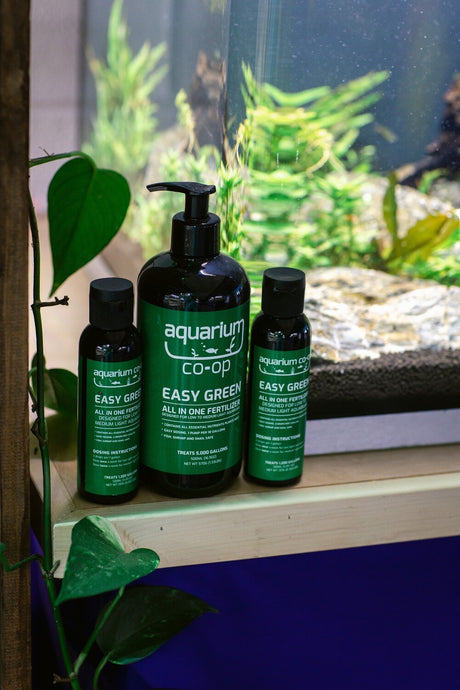Planning an aquarium out start-finish can be a daunting task, and what fish are compatible with what other fish is one of the most frequently asked questions we get here at April’s. You’re also always welcome to come to visit us at April’s to ask your questions!
YOUR STARTING POINT
The first question to ask yourself is what aspects of this aquarium you already have settled on. Perhaps you already bought an aquarium, maybe you know you want something with lots of live plants, or maybe you’ve fallen for a betta fish, and you’re building something around that. Usually, when you’re planning out a tank, you have at least one thing you’re sure of, and that’s where you start. Factors to Consider:
Aquarium and Fish Size
Most people start with an aquarium. They purchase a tank, and they start planning from there. The size of your aquarium will really help to narrow down your options, as different fish require different amounts of space. The larger your aquarium, the more options you’ll have for fish! A five-gallon aquarium is best for a single betta, a pair of scarlet badis, a trio of clown killifish, or a colony of shrimp. With anything over fifteen gallons, you can start to have small communities with schooling fish, like rasboras, small tetras, or small corydoras.
In this scenario, let’s say you already have a 20-gallon aquarium, and you’ve decided you definitely want a betta. A bettas minimum tank size is 2.5 gallons, so you know you have plenty of space for more fish. Remember that you don’t need to just consider the minimum size for each fish–you need to factor in a reasonable amount of space for all fish in the aquarium. Some fish require groups of the same species to feel comfortable, so while a single tetra could fit in a small container, you always have to account for at least six of them.
There is an old rule touted by experienced aquarists, 1” of fish per gallon, and while it’s nonsensical in some situations (a 15” oscar won’t do well in a 15-gallon aquarium) it can be pretty close for nano fish. In a 20-gallon aquarium, you could quite easily fit 10 neon tetras (they grow to 1.5″ each) and a betta. Don’t be afraid to understock. You don’t always need to reach the maximum capacity of an aquarium!
Aggression
Since you’ve selected a betta as your central fish, it’s time to look for schooling fish. Betta are territorial, and can become aggressive with other flashy fish of a similar size. They also may try to eat very small fish and dwarf shrimp. This is true for many other centrepieces, like german blue rams, many gouramis, and angelfish. There are many families of schooling fish to consider, including rasboras, hatchet fish, rainbowfish, pencil fish, tetras, and corydoras. You can also consider solitary but peaceful fish like small types of plecos, loaches, and gobies, and non-schooling but social fish, like guppies, platies, and mollies. Finally, there are invertebrates to think of, like snails, shrimp, and crayfish.
Temperature
The temperature of your aquarium is the next most important factor, and you’ll probably be considering this after you’ve selected a favourite fish. Since you want a betta, and their ideal temperature is about 80 degrees (78-82) so you know you’ll need to find fish happy with that. This is considered quite warm, so the temperature will narrow your choices down again. At this point, you’re probably reviewing the fish lists of stores near you, seeing if you like what they look like, and researching them individually.
Water Hardness/pH
Now you’re at the final stage of selection. You’ve probably found that according to tank size and temperature you could keep a school of harlequin rasboras, sterbai corydoras, and a group of three male endlers, but now you need to look at the hardness of the water they each like. Bettas, rasboras, and corydoras all prefer soft water and low pH, but endlers like harder water and a higher pH. Your best choice is to increase the number of rasboras you were planning to keep and consider the endlers for another aquarium, maybe one where you keep cherry shrimp (who also like hard water). Some fish are very adaptable and can live in parameters different from what’s ideal with few problems.
Conclusion
There are many factors to consider when deciding if livestock are compatible with your aquarium, and we didn’t go over all of them. Substrate, decorating choices, and lighting are all considerations as well! It’s complicated, but with enough research, you’ll have a great selection of livestock that get along well.
Checklist:
-
Is your aquarium large enough?
- Remember that the minimum aquarium size listed is usually only accounting for that exact fish.
- Do all of your livestock thrive at the same temperature? Most freshwater fish are tropical, but that could be anything from 70-86F. Most fish prefer a range of just a few degrees.
- Will any of your livestock eat the others?
- Do all of your livestock like the same water hardness? Shrimp, livebearers, crayfish, and African cichlids love hard water; bettas, gouramis, South American cichlids, tetras, rainbowfish, and rasboras love soft water. Sometimes you can make do with a middle range, but not always!
Resources:
- aqadvisor.com – It isn’t infallible, but this website is reasonably accurate and can provide some great insights on livestock compatibility
- Aquascaping for Beginners – While this group is focused on aquascaping they’re also available to help with other questions.
- BC Aquarium Hobbyists Club Facebook Page – This is a great local place to ask questions and get feedback
- PLUS: We’ll be posting a Livestock Compatibility List very soon!


